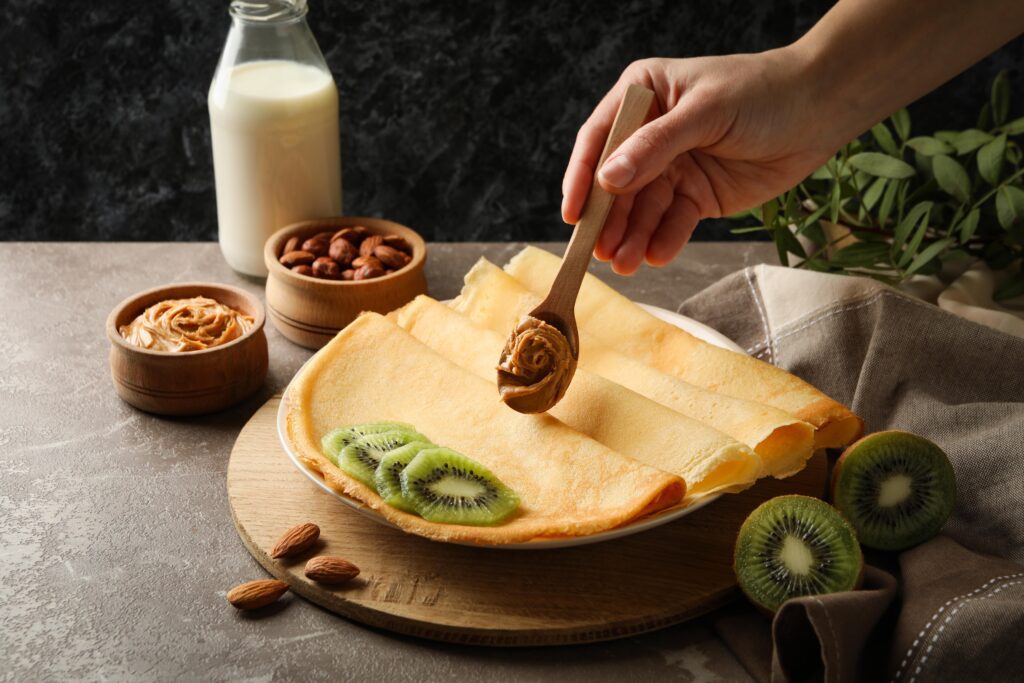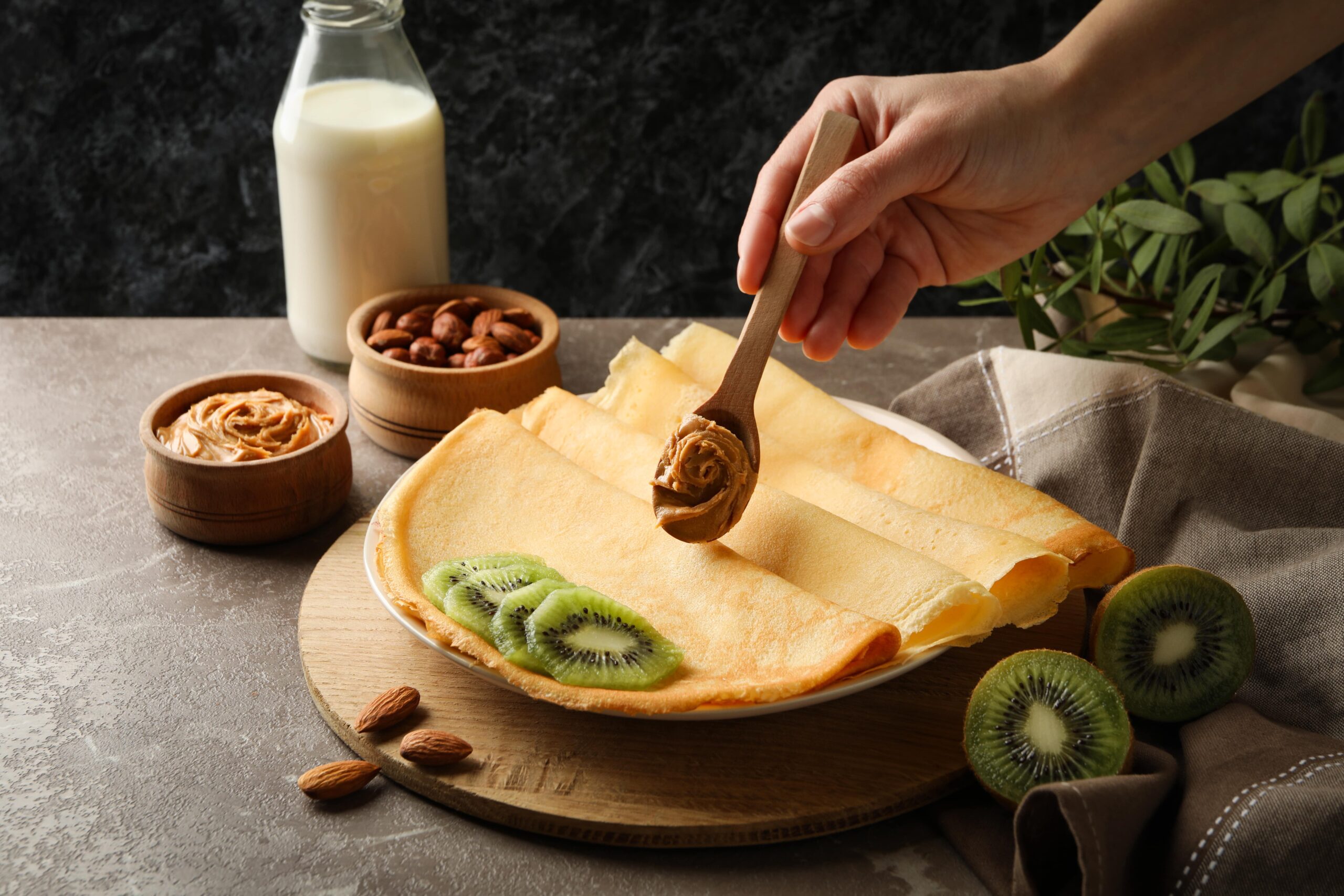Crepes, often associated with luxury dining and French cuisine, have gained global popularity. While they appear simple, their delicate texture, premium ingredients, and intricate preparation process often result in a higher price tag. So, why is crepe expensive compared to other popular dishes? Let’s uncover the reasons behind the cost and whether it’s truly worth it.

Understanding the Price of Crepes
What Exactly Is a Crepe?
A crepe is a thin, delicate pancake originating from France. There are two main types:
- Sweet crepes (crêpes sucrées) served with fillings like chocolate, fruit, or whipped cream.
- Savory crepes (crêpes salées), often made with buckwheat flour and filled with cheese, eggs, or meats.
Unlike typical pancakes, crepes require precision and finesse during preparation, contributing to their value.
The Price Range for Crepes
Crepes vary widely in price depending on the location and setting:
- Street vendors: Affordable options ranging from $3 to $8.
- Cafes and bakeries: Mid-range prices between $8 to $15.
- Upscale restaurants: Gourmet crepes can cost upwards of $20 due to premium ingredients and sophisticated presentation.
Learn more about the cost breakdown of crepes here.
Why Are Crepes Expensive?
1. High-Quality Ingredients
The cost of crepes often reflects the use of premium ingredients. From buckwheat flour for savory galettes to artisan cheeses and fresh fruits, the choice of fillings plays a key role in pricing. High-end options, like Nutella, imported chocolate, or organic produce, further increase the cost.
Additionally, the use of specialty ingredients for fillings, such as smoked salmon, truffles, or aged cheeses, elevates crepes to gourmet status. This sets them apart from simpler dishes like pancakes.
For insights on the variety of gourmet fillings, check out this guide on crepe essentials.
2. Labor-Intensive Preparation
While crepes may look simple, their preparation requires skill and precision. Unlike pancakes, crepes must be cooked ultra-thin, which demands:
- The right technique to spread the batter evenly.
- Constant attention to ensure the perfect golden finish.
- Precise layering and presentation of fillings.
Skilled chefs spend years mastering this art, and the labor involved naturally impacts the price.
3. Specialized Equipment and Overhead Costs
Restaurants and cafes invest in specialized equipment, such as crepe makers and crepe spatulas, to achieve the ideal thinness and texture. These tools, combined with high kitchen overhead costs, contribute to the overall expense.
For a detailed breakdown of how equipment impacts crepe pricing, explore this resource.

Crepes vs. Other Dishes: Why the Difference in Cost?
Crepes vs. Pancakes
While pancakes are thicker and require less precision, crepes demand:
- Higher skill levels to achieve a paper-thin texture.
- More time and effort for even cooking.
- Quality fillings that often cost more than pancake toppings.
These factors explain why crepes are priced higher than a standard pancake stack.
Crepes vs. Waffles
Waffles, though complex, are bulkier and often quicker to prepare. Crepes, on the other hand, offer:
- A lighter, more refined texture.
- Gourmet options that elevate them as a premium dish.
While waffles rely on batter consistency and iron-cooking, crepes are an artistic creation, justifying their cost.
Why Are Consumers Willing to Pay More?
1. Perceived Luxury and Authenticity
Crepes are often viewed as a luxury food or an authentic French delicacy. Their association with French cafes and gourmet dining makes people more willing to pay a premium for the experience.
2. Portion Size and Value
Although crepes may seem small, they are filling when loaded with rich, flavorful ingredients. The value comes not from the size but from the quality and refinement of the dish.
Frequently Asked Questions
Are crepes more expensive than pancakes?
Yes, crepes are typically more expensive due to the technique, ingredients, and skill required to prepare them.
Why do crepe prices vary by location?
The cost of crepes depends on factors like local demand, restaurant overhead costs, and ingredient availability. Upscale establishments often charge more.
Can I make crepes at home to save money?
Absolutely! Crepes can be cost-effective when made at home, provided you have the right crepe pan and ingredients.
Conclusion
So, why is crepe expensive? It’s the combination of high-quality ingredients, skilled preparation, and specialized equipment that sets crepes apart from other dishes. Whether enjoyed at a casual cafe or a gourmet restaurant, the price reflects the effort and artistry behind this delicate treat.
While crepes may come with a higher price tag, their refined texture, luxurious appeal, and unique flavors make them a worthwhile indulgence for any food lover.


6 thoughts on “Crepe Expensive: Why Does It Cost So Much?”